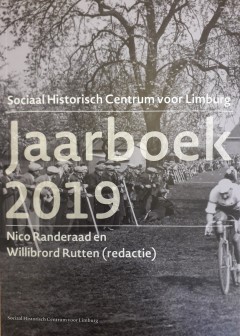Wielrennen in Limburg in de eerste helft van de twintigste eeuw. Een 'volkssport' tussen rijk, provincie en lokaal initiatief
DOI:
https://doi.org/10.58484/ssegl.v64i12333Trefwoorden:
twintigste eeuw, sportgeschiedenis, Limburg, wielersportSamenvatting
Limburg, the southern-most province of the Netherlands, prides itself in being more devoted to cycling as a sport than any other Dutch province, surpassed perhaps only by Noord-Brabant. And indeed, earlier research has shown that a remarkably high number of road races were organised in Limburg since the 1950s. This paper traces the beginning of the provincial enthusiasm for road racing back to the 1930s, when the provincial government, despite the national ban on road racing, increasingly allowed races on provincial and local roads. Using sources from provincial and local archives and historic newspapers, the paper investigates the character and origins of the accommodating provincial road racing regime. In the end, the presence of hills, the internationalisation of competitive cycling, the established tourist trade in the region, the strong concentration of workers in the Limburgian mining districts, and the economic crisis of the 1930s all come together in explaining the rise of Limburg as a road cycling region. During the war, road racing did not decline: the new regime in The Hague at least partly spoke in favour of road racing, while the provincial government came to be led by NSB frontman Max de Marchant et d’Ansembourg, who had organised cycling races in the 1930s himself. The paper thus traces the first instance of Limburg’s favourable provincial policies towards cycling as sport and leisure activity, which established a tradition that lasts until today.
Downloads
Gepubliceerd
Nummer
Sectie
Licentie

Dit werk wordt verdeeld onder een Naamsvermelding-NietCommercieel 4.0 Internationaal licentie.



